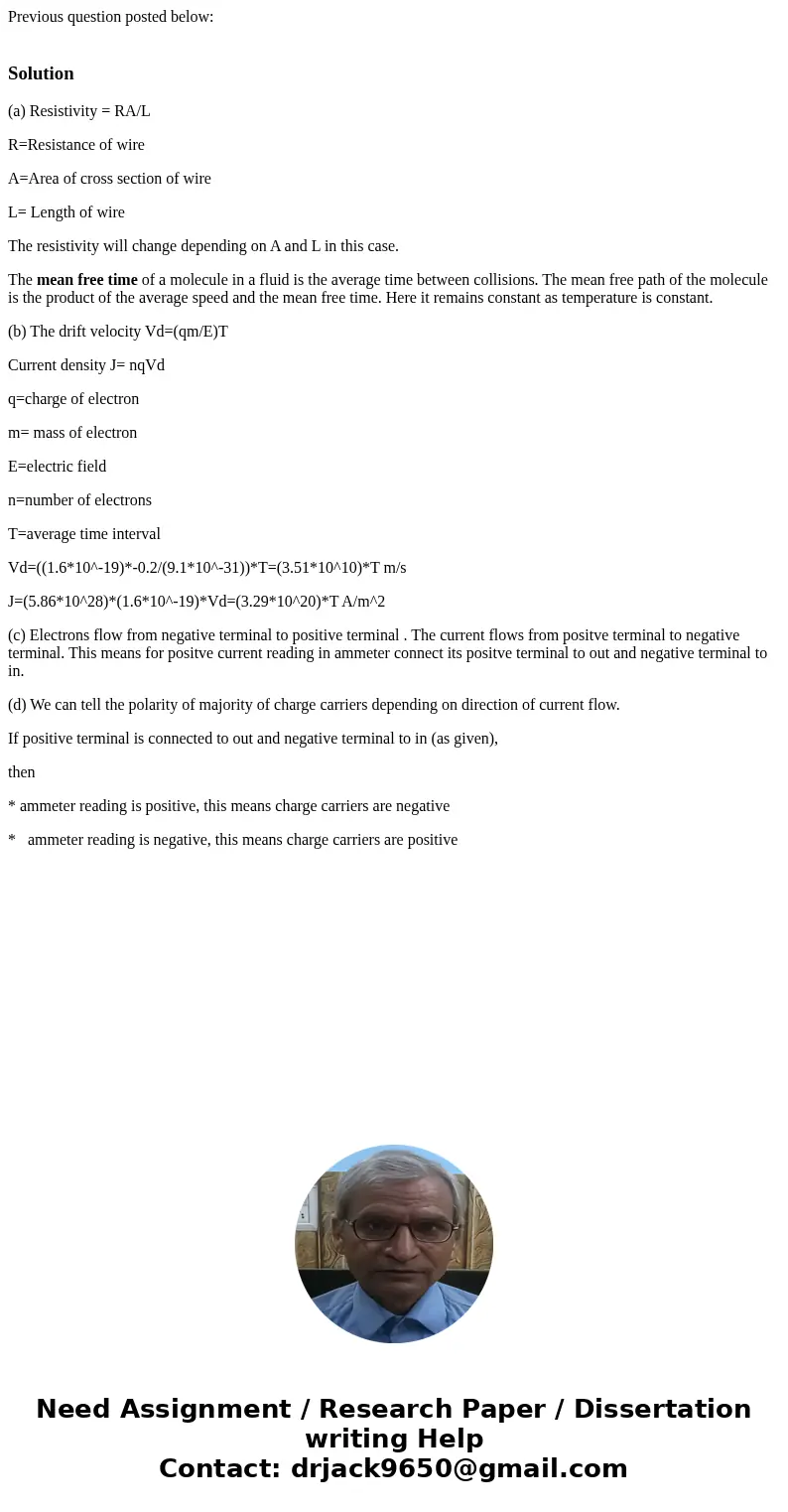Previous question posted below Solutiona Resistivity RAL RR
Solution
(a) Resistivity = RA/L
R=Resistance of wire
A=Area of cross section of wire
L= Length of wire
The resistivity will change depending on A and L in this case.
The mean free time of a molecule in a fluid is the average time between collisions. The mean free path of the molecule is the product of the average speed and the mean free time. Here it remains constant as temperature is constant.
(b) The drift velocity Vd=(qm/E)T
Current density J= nqVd
q=charge of electron
m= mass of electron
E=electric field
n=number of electrons
T=average time interval
Vd=((1.6*10^-19)*-0.2/(9.1*10^-31))*T=(3.51*10^10)*T m/s
J=(5.86*10^28)*(1.6*10^-19)*Vd=(3.29*10^20)*T A/m^2
(c) Electrons flow from negative terminal to positive terminal . The current flows from positve terminal to negative terminal. This means for positve current reading in ammeter connect its positve terminal to out and negative terminal to in.
(d) We can tell the polarity of majority of charge carriers depending on direction of current flow.
If positive terminal is connected to out and negative terminal to in (as given),
then
* ammeter reading is positive, this means charge carriers are negative
* ammeter reading is negative, this means charge carriers are positive

 Homework Sourse
Homework Sourse